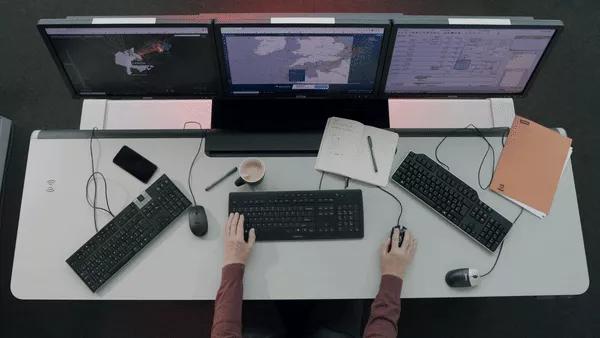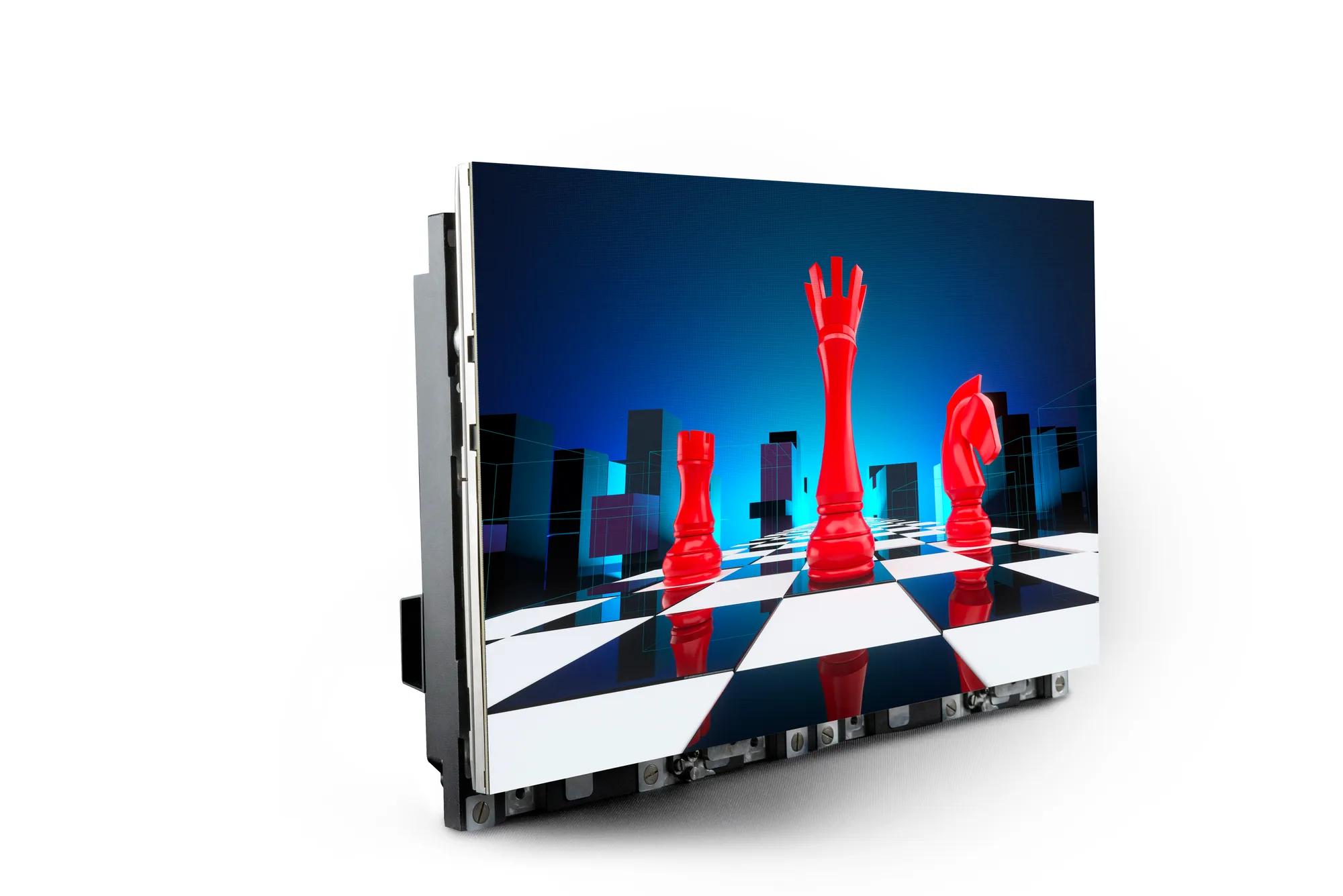POP or COP? Two scenarios for setting up your control room
联网 · 拼接显示系统 · 5 分钟阅读

Control room operators are confronted with an increasing number of sources and applications that need to be monitored. Visualization and collaboration technology helps them deal more efficiently with this information overload and supports them to view better, share faster and resolve quicker.
In setting up a visualization solution, control room designers need to answer two important questions:
- How can operators monitor the abundance of sources in the most efficient and ergonomic way?
- How can operators switch most efficiently from a state of constant vigilance during monitoring into immediate reaction in case things get critical or when an incident occurs?
Visualization and collaboration in a control room can be realized according to two scenarios:
- Scenario 1: the Personal Operational Picture (POP): In this scenario, operators exclusively rely on a personalized, user-friendly workspace to manage a multitude of data and sources.
- Scenario 2: the Common Operational Picture (COP): Here, operators combine a personal workspace with a central, large video wall.
Scenario 1: the Personal Operational Picture (POP)
In the control room sector, there is a growing trend towards more personal operator workspaces, enabling control room staff to interact more closely with their content. Although a video wall is probably the most obvious image we have of a control room, smaller control rooms often work without a large-screen common operational picture. Thanks to networked visualization technology, it is perfectly possible to view, share and interact with control room content on their personal operator workstation and on any display that is connected to the network.
The content from the source is connected to the secured IP network – either by a direct connection to the switch or using a TransForm N encoder. A decoder then takes the information from the network, presenting it at the user side.
OpSpace: the personal operator workspace
With a solution like Barco OpSpace, operators can call any application into the personal work area positioned in front of them with a single click using only one keyboard and mouse. They can use the screen in front of them to interact with the content, while they can maintain an overview of other applications in peripheral screens.

Barco OpSpace creates a single workspace consisting of several displays on the operator’s desk for viewing, monitoring and interacting with multiple clients that reside on multiple networks with different security clearances or liability concerns.
Scenario 2: the Common Operational Picture (COP)
Although personal workstations are increasingly important, large-screen visualization still plays a crucial role in the decision-making process. In this scenario, operators manage one or more applications on their personal workspace, and monitor collaborative content on an overview screen that provides context, such as dashboards, maps or application overviews.
As control rooms scale towards bigger operations, in general the need for a Common Operational Picture (COP), displayed on a large video wall, increases. In that case, there’s more content to be presented, more stakeholders involved, and more decisions to be made. The efficiency of decision-making then depends on how smoothly operators can switch back and forth from their personal view to the overview display.
Barco’s suite of networked visualization solutions provides operators and decision-makers with easy access to video, images and data, and allow them to connect to this information, to configure how and where it is displayed, and to collaborate in the most efficient way. The most powerful aspect of this solution is that all information is available on the network at all time. A decoder can easily present it to a display. This can be a large video wall or an operator desk, but also a crisis room. Information (or perspectives) can easily be shared between rooms, for optimal collaboration.
A networked control room with a central COP is possible with the following technologies:
- A large video wall: Barco is one of the few manufacturers that offers a 24/7 visualization solution in all dominant video wall technologies (rear-projection, LCD and direct-view LED).
- The video wall manager software ensures the good functioning of the large display. It is used for easy set-up, to ensure a perfect image and for increased security. This is also the home of Sense X, Barco's renowned automatic brightness and color calibration system.
- Remote monitoring and management is handled by Barco's Video wall Management Suite. This cloud-based application allows the service team to centrally keep an eye on a fleet of displays, tracking impending failures at a very early stage - with the objective to prevent them.
- TransForm N encoders from various device types (a computer or a camera) take information from video, image or data sources and push it onto the network. Additional sources can easily be integrated into the system by adding a new encoder.
- At the display side, a TransForm N decoder takes the signals from the network and presents them to be shown on the screen.
- The management server (TransForm N service node) handles the configuration & management of the networked visualization system. This entails TransForm N CMS, Barco’s control room management suite, a powerful software system that gives users complete control over their displays and video walls.
- Visualization on a large video wall can be combined with several Barco OpSpace operator workspaces. The source is on the network
Need to involve field staff? No problem!
It may be necessary to securely share content from the control room to external stakeholders in the field and vice versa. With Barco’s SecureStream media streaming solution, you can do exactly that.
SecureStream is an addition to Barco's TransForm N and CMS control room and collaboration products. It enables operators to share any source from the video wall or operator workspace with remote experts or mobile devices. They can just drag and drop video or data sources into a channel that can be pushed to field staff or external experts, while the remote end user can use the web browser of their personal mobile device to view the shared content. Because only the pixels and not the data is streamed, there is absolutely no security hazard.
POP or COP? Which one is better?
There is no single way to design a control room to manage operational information. Some rooms are small, some are large. Some have a video wall, some don’t. There also is no general rule that prescribes the use of a video wall according to room size or operator seats. First and foremost, setting up a visualization solution requires operators, supervisors and other stakeholders to think about which information they need and what they want to do with it.
The benefit of Barco’s networked visualization concept is that it easily enables control rooms to scale according to their needs, for example from a POP scenario to a COP scenario, or towards more operator seats or multiple video walls. Adding additional sources or destinations (single monitors or full video walls) to this infrastructure is just a matter of plugging in extra input or output nodes. This makes Barco’s networked visualization solutions a safe investment for the future.
Since over 30 years Barco’s approach in control rooms has been straight forward: to provide you the full solution stack to ‘view better, share faster, resolve quicker’. Count on us!

